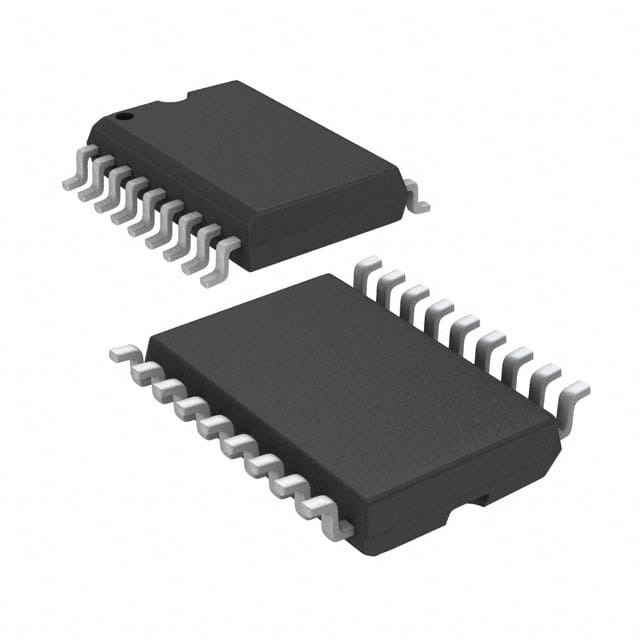Szczegóły produktu można znaleźć w specyfikacjach.

ADS1210U
Product Overview
- Category: Analog-to-Digital Converter (ADC)
- Use: Converts analog signals into digital data for processing and analysis
- Characteristics: High resolution, low power consumption, small form factor
- Package: Integrated Circuit (IC)
- Essence: Provides accurate and reliable conversion of analog signals to digital format
- Packaging/Quantity: Available in surface mount packages, typically sold in reels or trays
Specifications
- Resolution: 12 bits
- Sampling Rate: Up to 1 million samples per second
- Input Voltage Range: ±10V
- Power Supply: +5V
- Operating Temperature Range: -40°C to +85°C
Pin Configuration
The ADS1210U has a total of 16 pins. The pin configuration is as follows:
- VREFP: Positive reference voltage input
- VREFN: Negative reference voltage input
- AGND: Analog ground
- AIN1: Analog input channel 1
- AIN2: Analog input channel 2
- CLK: Clock input
- CS: Chip select input
- DIN: Serial data input
- DOUT: Serial data output
- DRDY: Data ready output
- PDWN: Power down input
- DVDD: Digital supply voltage
- AVDD: Analog supply voltage
- DGND: Digital ground
- NC: No connection
- RESET: Reset input
Functional Features
- High-resolution ADC with 12-bit accuracy
- Fast sampling rate of up to 1 million samples per second
- Low power consumption for energy-efficient operation
- Serial interface for easy integration with microcontrollers and other digital devices
- Built-in data ready signal for synchronization with external systems
- Power-down mode for further power savings during idle periods
Advantages and Disadvantages
Advantages: - High accuracy and resolution for precise measurements - Compact size allows for space-saving integration in various applications - Low power consumption extends battery life in portable devices - Serial interface simplifies connectivity with digital systems
Disadvantages: - Limited input voltage range may not be suitable for certain applications requiring higher voltage levels - Higher cost compared to lower-resolution ADCs - Sensitivity to noise and interference may require additional filtering measures
Working Principles
The ADS1210U operates on the principle of successive approximation. It samples the analog input signal, converts it into a digital value using an internal 12-bit ADC, and outputs the result through the serial interface. The device utilizes an internal reference voltage and employs various techniques to minimize errors and improve accuracy.
Detailed Application Field Plans
The ADS1210U finds application in various fields, including:
- Industrial Automation: Used for data acquisition and control systems in manufacturing processes.
- Medical Instruments: Enables accurate measurement and monitoring of vital signs and patient parameters.
- Test and Measurement Equipment: Provides high-resolution data acquisition capabilities for precise measurements.
- Communication Systems: Used in wireless communication devices for signal processing and modulation.
- Automotive Electronics: Enables sensor data acquisition and control in automotive systems.
Alternative Models
Other alternative models that offer similar functionality to the ADS1210U include:
- ADS1211U: 10-bit resolution ADC with similar features and pin configuration.
- ADS1212U: 14-bit resolution ADC with enhanced accuracy and performance.
- ADS1213U: 16-bit resolution ADC with higher precision for demanding applications.
These alternative models can be considered based on specific requirements and desired performance characteristics.
Word count: 409 words
Wymień 10 typowych pytań i odpowiedzi związanych z zastosowaniem ADS1210U w rozwiązaniach technicznych
Sure! Here are 10 common questions and answers related to the application of ADS1210U in technical solutions:
Q: What is the ADS1210U?
A: The ADS1210U is a high-precision analog-to-digital converter (ADC) designed for various applications that require accurate measurement of analog signals.Q: What is the resolution of the ADS1210U?
A: The ADS1210U has a resolution of 24 bits, allowing for precise measurement and conversion of analog signals.Q: What is the input voltage range of the ADS1210U?
A: The ADS1210U has a differential input voltage range of ±2.5V, making it suitable for a wide range of signal measurement applications.Q: Can the ADS1210U operate at different sampling rates?
A: Yes, the ADS1210U supports programmable sampling rates ranging from 20 to 2000 samples per second (SPS), providing flexibility for different application requirements.Q: Does the ADS1210U have built-in digital filters?
A: Yes, the ADS1210U features an integrated digital filter that can be configured to reduce noise and improve the accuracy of the converted signal.Q: Can the ADS1210U interface with microcontrollers or other digital devices?
A: Yes, the ADS1210U has a serial interface (SPI) that allows easy communication with microcontrollers or other digital devices for data transfer and control.Q: Is the ADS1210U suitable for battery-powered applications?
A: Yes, the ADS1210U has low power consumption and can operate in low-power modes, making it suitable for battery-powered applications where power efficiency is crucial.Q: Can the ADS1210U handle multiple channels?
A: No, the ADS1210U is a single-channel ADC, meaning it can only measure and convert one analog signal at a time.Q: What is the operating temperature range of the ADS1210U?
A: The ADS1210U can operate within a temperature range of -40°C to +85°C, making it suitable for various industrial and automotive applications.Q: Are there any evaluation boards or development kits available for the ADS1210U?
A: Yes, Texas Instruments provides evaluation boards and development kits for the ADS1210U, which can help users quickly prototype and evaluate their designs.
Please note that these answers are general and may vary depending on the specific application and implementation of the ADS1210U in a technical solution.

